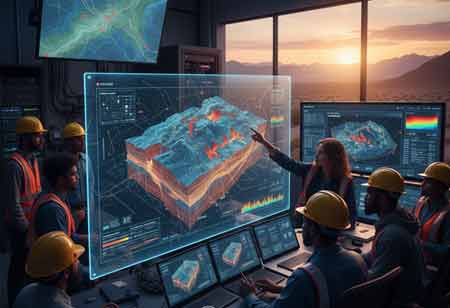THANK YOU FOR SUBSCRIBING
Green Infrastructure Transforming Communities with Sustainable Solutions
Green infrastructure is an innovative approach to creating sustainable communities by integrating natural systems into urban and suburban development.
By
Apac CIOOutlook | Wednesday, January 29, 2025
Stay ahead of the industry with exclusive feature stories on the top companies, expert insights and the latest news delivered straight to your inbox. Subscribe today.
Green infrastructure is a crucial approach to sustainable urban development that integrates natural systems into the built environment.
FREMONT, CA: Green infrastructure is an innovative approach to creating sustainable communities by integrating natural systems into urban and suburban development. It represents a paradigm shift in design and planning, emphasizing the incorporation of ecological principles into the built environment.
Development of Green Infrastructure Projects
Planning and Design
Developing green infrastructure begins with understanding local landscapes and ecological systems. Urban planners and environmental engineers collaborate to identify areas that could benefit from green solutions. Modern GIS (Geographic Information System) tools enable efficient mapping of natural resources and potential infrastructure sites.
Investment and Funding
Securing investment for green infrastructure projects is often a collaborative effort between governments, private sector stakeholders, and non-profit organizations. Recent trends show an increase in green bonds issued to fund eco-friendly projects. Carbon credits and public-private partnerships also play a crucial role in making these initiatives economically feasible.
Project Implementation
From small-scale projects like community rain gardens to large-scale urban greening initiatives, successful implementation involves meticulous planning, active community engagement, and robust policy backing. For example, cities like Singapore have adopted extensive greenery integration in urban designs, transforming urban areas into lush, livable ecosystems.
Technological Advancements
The latest technological advancements have revolutionized the development of green infrastructure. Smart monitoring systems enable real-time analysis of drainage efficiency and air quality factors. Sustainable materials, such as recycled plastics and bio-based composites, are increasingly being utilized to enhance resilience and performance.
Green infrastructure offers many benefits, encompassing environmental, social, and economic advantages. Environmentally, it enhances flood management by leveraging nature's ability to regulate water flow, mitigating urban flooding. Urban forests, green roofs, and wetlands also serve as vital habitats, promoting biodiversity within cityscapes. Green infrastructure also plays a crucial role in climate adaptation, helping to reduce urban heat island effects and lower carbon emissions.
Integrating green spaces contributes to improved public health by providing cleaner air and accessible areas for physical and mental well-being. These projects often involve community participation, fostering engagement, strengthening local relationships, and instilling a sense of ownership. Furthermore, green infrastructure enhances the aesthetic appeal of urban environments, making cities more attractive and livable.
Economically, green infrastructure drives positive impacts by increasing property values in areas surrounding green spaces. It also offers cost savings, as green systems typically require less maintenance than traditional gray infrastructure. Moreover, these initiatives stimulate local economies by creating employment opportunities through their implementation and ongoing upkeep.
Governments globally are enacting policies to incentivize green infrastructure. The Green Deal emphasizes integrating natural capital into urban planning in the EU. Meanwhile, new federal initiatives in the US are investing billions of dollars into sustainable infrastructure to combat climate change effects.
Innovations on the Horizon
Cutting-edge technology like drone-assisted planting, AI-powered environmental monitoring, and advancements in rainwater harvesting systems are shaping the future of green infrastructure implementation. Community-driven platforms for crowdfunding these projects are also gaining traction, empowering citizens to contribute directly to these transformative initiatives.
The development of green infrastructure represents a vital step toward building more sustainable, resilient communities. The benefits are far-reaching, from mitigating environmental disasters to improving public health and fostering economic growth. As climate challenges intensify, governments, businesses, and individuals must embrace and invest in green infrastructure. With continued innovation and community involvement, the future of urban development looks greener and brighter.





